Butterflies and Moths
Media

Species Types
Scientific Name
Polygonia progne
Description
The gray comma is easy to ID if you can see the underside: it is charcoal gray with many fine dark streaks, and its comma marking is L-shaped and narrows to a fine point at each end.
Media
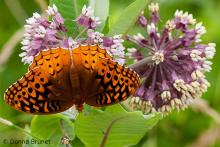
Species Types
Scientific Name
Speyeria cybele
Description
The great spangled fritillary is common and easily recognized. This glorious butterfly is often seen in city yards and gardens as it seeks flowers.
Media
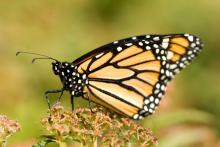
Species Types
Scientific Name
Danaus plexippus
Description
Monarchs are well-known butterflies distinguished by their relatively large size, rusty or orange wings with black veins, and black bodies. The larvae usually are found on milkweeds.
Media
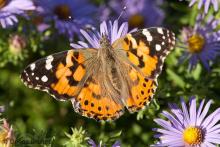
Species Types
Scientific Name
Vanessa cardui
Description
The painted lady is a delicately patterned butterfly found nearly worldwide. It migrates to Missouri in spring. There are several broods.
Media

Species Types
Scientific Name
Speyeria idalia
Description
The regal fritillary is a large, silver-spotted, orange and blackish-gray butterfly of our native tallgrass prairies. Because of its dwindling habitat and steeply declining numbers, it is a species of conservation concern in Missouri and nationally.
Media
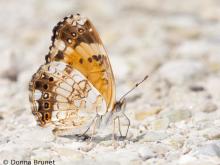
Species Types
Scientific Name
Chlosyne nycteis
Description
Black and orange above, paler below, the silvery checkerspot has a telltale wide white crescent in a brownish patch along the edge of the hindwing underside.
Media

Species Types
Scientific Name
Pontia protodice
Description
The checkered white is named for the charcoal-colored patterns on the white wings of adults. As with the closely related cabbage white, the larvae feed on plants in the mustard family.
Media
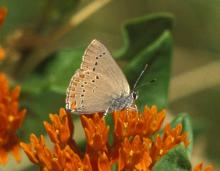
Species Types
Scientific Name
Satyrium titus (syn. Harkenclenus titus)
Description
The coral hairstreak is the only Missouri hairstreak lacking hindwing “tails” and without a blue spot on the outer hindwing edge.
Media

Species Types
Scientific Name
Junonia coenia
Description
The common buckeye is one of Missouri’s prettiest butterflies, but it doesn’t overwinter here. Instead, migrants arrive in late spring and early summer.
Media
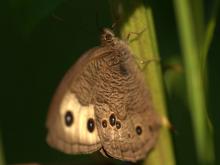
Species Types
Scientific Name
Cercyonis pegala
Description
Common wood nymphs vary by region. Some have a yellow area on the forewing containing two eyespots. Others may have the yellow area reduced to a yellow circle around each eyespot.
See Also


Media

Species Types
Scientific Name
About 1,500 species in North America north of Mexico
Description
Adult caddisflies are mothlike. Their larvae are aquatic and build portable, protective cases out of local materials, including grains of sand, bits of leaves and twigs, and other debris.
Media

Species Types
Scientific Name
Corydalus cornutus
Description
Adult eastern dobsonflies are huge and mothlike, with large wings and a weak, fluttery flight. The fiercely predaceous aquatic larvae, called hellgrammites, are well-known to anglers, who often use them as bait.
About Butterflies and Moths in Missouri
Butterflies, skippers, and moths belong to an insect order called the Lepidoptera — the "scale-winged" insects. These living jewels have tiny, overlapping scales that cover their wings like shingles. The scales, whether muted or colorful, seem dusty if they rub off on your fingers. Many butterflies and moths are associated with particular types of food plants, which their caterpillars must eat in order to survive.





















